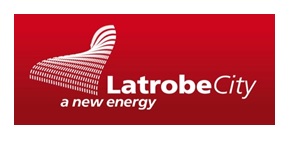Information
-
Audit Title
-
Site
-
Location
-
Contractor/s
-
Conducted on
-
Audit Conducted By
-
Other Personnel Present
Management Responsibilities
-
Is there an Environmental, Health and Safety Management Plan developed for this project?
-
Is the Health and Safety Policy displayed and signed by management?
-
Are emergency response procedures developed and displayed at appropriate locations?
-
Is there safe access in and out of the site?
-
Is there suitable public protection where construction works are next to, or over public access ways?
-
Are the personnel records, certificates of competency and induction records kept on site?
-
Are contractor/sub contractor SWMS (Safe Work Method Statements) & JSA's provided before commencing each major task?
-
Are appropriate signs posted at entrance? I.e. hard hats, report to site office
-
Are necessary permits developed and retained on site (e.g. Excavation Permits)?
Amenities
-
Is there covered access from inclement weather?
-
Is site hut seating adequate for the numbers on site?
-
Are site huts hygienic? I.e. tidy bins with bin liners
-
Are there adequate numbers of toilet cubicles with clean tidy wash facilities?
-
Are there notice boards in site huts?
-
Cool clean drinking water available at appropriate locations?
-
Are there toilets for women?
-
Have provisions been made to adequately secure the site at all times and in particular, when left unattended?
Emergency Response/First Aid
-
Are site personnel aware of the first aid location and is it clearly identified?
-
Is the first aid box adequately stocked?
-
Are there adequate first aid personnel clearly identified for contact?
-
Are first aid treatment records kept on site?
-
Are emergency response personnel trained in site emergency procedures? Last test date of procedures __/__/____
-
Are all workers aware of what to do in case of fire or other emergency?
Training and Consultation
-
Is there a site induction?
-
Are induction records maintained on site?
-
Do all site personnel hold a current industry induction card?
-
Is emergency response and evacuation training conducted?
-
Are personnel trained in fire precautions and use of fire extinguishers?
-
Is training for identified hazardous work processes conducted? I.e. confined spaces
-
Where subcontractors collaborate, interface, co-operate or work together, is everybody involved inducted?
-
Are all visitors to site inducted?
-
Are hazards,incidents and accidents reported to site personnel at toolbox meetings?
-
Do supervisors conduct regular toolbox meetings?
-
Do supervisors carry out risk assessments and incident reports?
-
Are healthy and safety meetings held regularly?
-
Are health and safety meeting minutes discussed at toolbox meetings and displayed in the site hut?
Electrical
-
Does a licensed electrician test portable electrical equipment every quarter? RCD/safety switch tested every month?
-
Are extension leads correctly connected to power supply?
-
Are electrical leads safely placed? (e.g. Not lying in water? Not a trip hazard?)
-
Is the electrical testing register maintained on site?
-
Is all electrical equipment in good condition?
Scaffolding
-
Scaffold types in use?
-
Are the standards on solid foundations with adequate soul boards?
-
Is there adequate bracing in all directions?
-
Are the ties correctly positioned and fixed? (Every 3 bays, 2 lifts)
-
Are there working platforms at required locations?
-
Are handrails and kickboards installed on scaffolds over 2 metres?
-
Are mesh guards installed where risk of material falling may occur? I.e. bricks
-
Is there access to and from all working platforms?
-
Are work platforms the correct distance from the working face?
-
Are ladders of an industrial grade?
-
Are ladders secured top and bottom and exceeding platform 1 metre at a 4:1 pitch?
-
Are scaffold boards secured to prevent uplift from winds?
-
When completed, are scaffolds tagged with scaftag system or similar?
-
Are signs or barriers erected for incomplete scaffolds?
-
Are scaffolds regularly inspected and records kept of details?
Hazardous Materials
-
Are Material Safety Data Sheets available for all hazardous substances?
-
Is a chemical register kept on site?
-
Do site personnel use and understand MSDS's?
-
Are appropriate signs posted at storage areas on site?
-
Are containers appropriately labelled?
-
Are chemical storage facilities provided with an appropriate containment area? I.e. bunds and containment materials
-
Is appropriate PPE supplied when using hazardous materials?
Cranes and Rigging (Applicable When lifting Drainage Structures and Pipes)
-
Crane certificates of inspection provided and kept on record at site?
-
Crane driver's certificate of competency and licenses? Intermediate riggers for concrete panel erection?
-
Is the manufacturer's instruction book and specific crane's log book in the crane and completed daily?
-
Cranes set up on firm level ground; engineer's specification details where applicable? (i.e. suspended floors & near excavations )
-
Is all rigging equipment in good condition with inspection records kept on site?
-
Riggers and Dogmen certified and recorded and used for crane operations?
-
Is there a safe working zone established for crane operation?
Plant and Equipment
-
Are excavators used as cranes, fitted with burst protection and do they have the SWL (Safe Working Load) stamped on boom?
-
Are manufacturer's instructions for lifting capacities in all directions in excavator cabin?
-
Are roll over protection systems installed on all earthmoving equipment?
-
Where applicable, are reverse and visual alarms operating and audible? I.e. flashing lights
-
Has a schedule of inspection, maintenance, repair and cleaning been developed for all plant/equipment?
-
Are isolation procedures developed for maintenance and repair work on plant?
-
Are Elevated Work Platform logbooks and daily inspections completed, recorded and kept on the machine?
-
Do only licensed operators operate Elevated Work Platforms?
-
Are Elevated Work Platforms used on a firm level surface?
-
Is the operators manual readily accessible?
-
Are all combustion type engines only operated outdoors or with extra ventilation? Eg portable welders, generators, etc
-
Are seat-belts installed in any forklifts and used by the operators?
-
Have foreseeable hazards from the operation of plant and/or equipment been assessed, including the following:<br>* contact or entanglement with machinery or materials<br>* being trapped between the machine and any other fixed structure<br>* being struck by ejected material from machinery<br>* noise and vibration from machinery<br>* services, both overhead and underground?
-
Have all operators of plant/equipment received appropriate training, hold certificates of operation where required and have demonstrated their competence to operate plant/equipment to the satisfaction of the contractor?
-
Are all records kept to show that all operators have received appropriate training and instruction to operate plant/equipment?
Excavation and Trenching
-
Is a site plan available for existing and new services?
-
Have existing underground services been physically located? (e.g. Non-destructive Testing/Location)
-
Are new and existing services identified on site and controls implemented to prevent accidental contact?
-
Have manual tools been used to dig trial holes to positively identify position of the utilities?
-
Are relevant authorities notified of any inconsistencies between the information provided and the actual location of the utilities?
-
If utilities cannot be located according to plans provided by the relevant authority then their assistance is sought at the site to locate the utility?
-
Are procedures in place to avoid isolated personnel working in excavations?
-
Is air quality testing carried out to ensure toxic gas build up does not occur?
-
Is signage and barricading used to reduce erosion or collapse? Is it adequate to keep pedestrians out?
-
Are excavations regularly inspected for erosion or collapse?
-
Is an adequate system of safety (including benching, battering, shoring, shielding or other forms of earth retention) been used to prevent collapse for trenches greater than 1.5m?
-
Has safe access/egress been provided for deep excavations?
-
Has spoil material and equipment been stored away from excavation edges?
-
Are dust control measures in place?
-
Are all drainage pits covered with an appropriate cover of adequate strength?
-
Have emergency procedures been developed and communicated to all persons working in or near the excavation/s before works commenced?
-
Do the emergency procedures address all foreseeable major hazards, particularly:<br>* collapse of excavation<br>* unplanned contact with underground or overhead services<br>* inrush of water or other substance into excavation
-
Has the nature and condition of the ground or working environment been assessed, with particular attention being paid to:<br>* the possibility of the fall or dislodgement or earth/rock or other materials<br>* the instability of the excavation or adjoining structure<br>* the in rush of water (or any other substance)<br>* the placement of excavated material<br>* instability due to person or plant working adjacent to the excavation
-
Has a geotechnical engineer been consulted?
Confined Space
-
Are emergency procedures developed for confined space works?
-
Is equipment available to check potential confined spaces (for gases etc.) prior to entry?
-
Is emergency rescue equipment available? I.e. radios, air monitors
-
Are personnel trained for confined space space works including sentries?
Work at Heights
-
Are procedures developed for working at heights?
-
Are emergency procedures developed for the retrieval of a fallen or injured person?
-
Are personnel trained for working at heights?
-
Is safe access and egress provided for personnel?
-
Are harnesses inspected and inspection records kept on site?
-
Are anchorage points assessed by a qualified engineer?
-
Are barriers, barricades and signs erected to delineate restricted areas?
Environmental
-
Is an EMP on-site and readily available for inspection?
-
-
Is water or other means used to prevent dust generation?
-
Are roadways defined and used by site personnel?
-
Have measures been taken to prevent spoil on roads?
-
Is there adequate watering equipment when cutting material?
-
Has contamination of run-off been reduced/eliminated by installing silt fences before entering stormwater system or natural water courses?
-
Are noisy work tasks defined, controls used to reduce noise levels and signage utilised?
-
Is sound pressure level testing performed to ensure compliance?
-
Are signs posted to alert personnel?
Personal Protective Equipment (PPE)
-
Are signs displayed to identify the required PPE?
-
Is PPE readily available and complying with the relevant Australian Standards?
-
Are personnel trained in the use of specific PPE?
-
Is hearing protection provided and used where required?
-
Are facilities provided for the maintenance and storage of PPE?
Site Security
-
Add signature
















